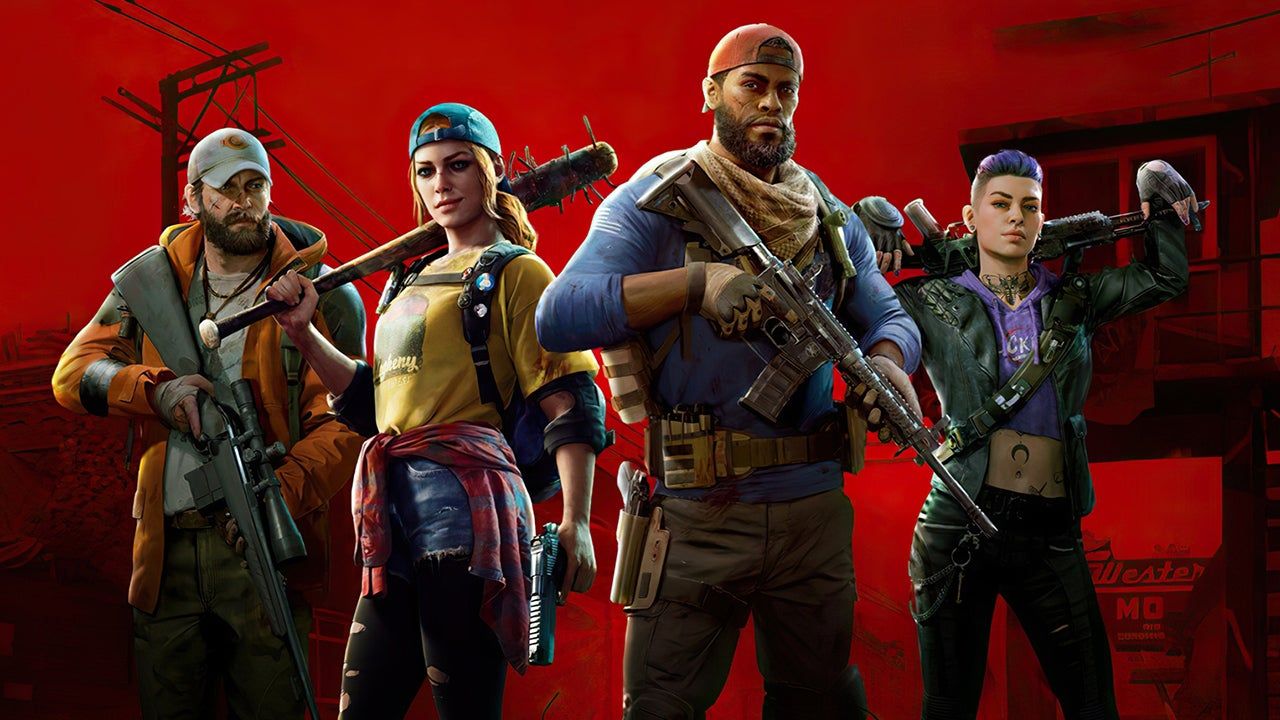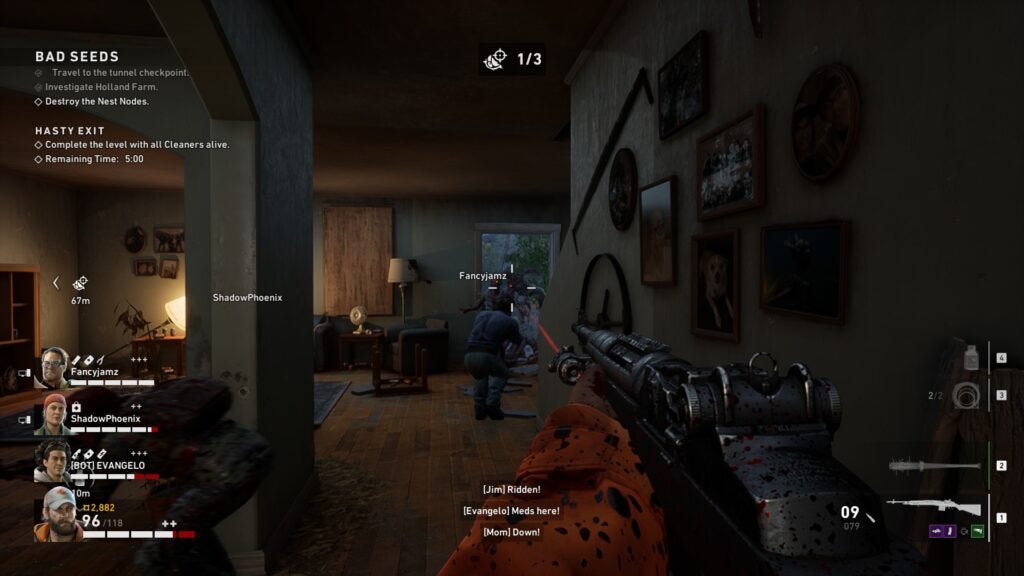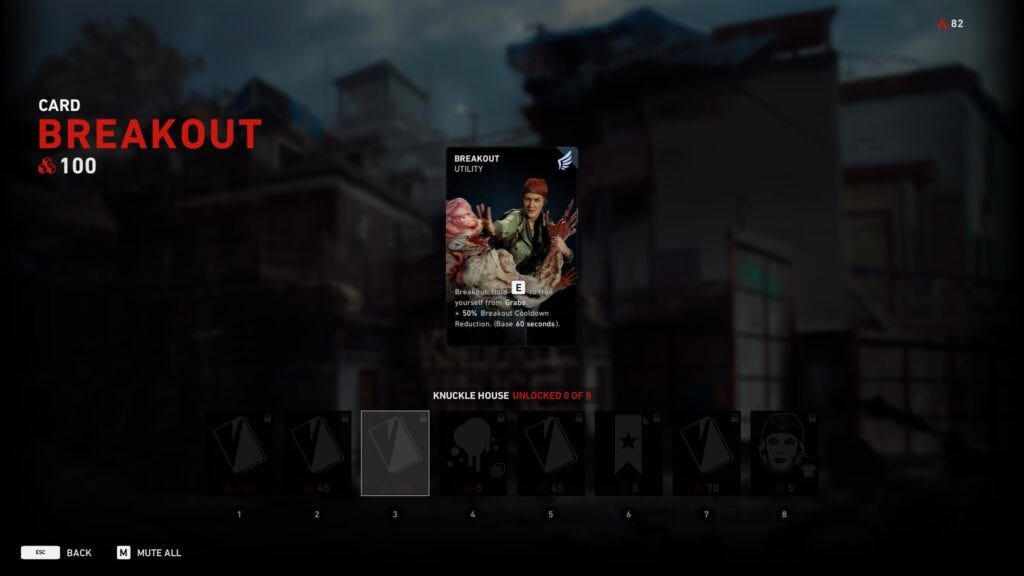What Sunk Back 4 Blood?
Going back for more blood

It was announced a few months ago that Back 4 Blood, the latest cooperative shooter from the makers of Left 4 Dead is ending its live service and that no new content is coming. With one major restructuring patch, the developers are essentially done with the game. Reception of the game has been mixed for some time, with fans of the original L4D feeling that the game was too bloated, while others liked the increased challenge and new card-based progression.
Some friends and I have had a chance to go back to the game with all the expansions in it, and what we found was a very different game that baffles us a bit when contemplating its philosophy.
Left 4 Blood
For those that missed the original review and talk about it, Back 4 Blood(B4B) was viewed as the next logical progression of the team-based player vs. the AI content of Left 4 Dead(L4D), World War Z, and other titles. You and up to three other friends must complete acts facing down ever-escalating hordes of infected people.
A big aspect that seemed to run throughout the design of B4B was to combat the staleness that happens in these games. Once you and your friends are good at them, these games were pretty much over. At our peak with L4D and its sequel, my friend group could play on expert realism without skipping a beat. To that end, there was a greater focus in B4B on abstracted progression and things to mess with each stage.
The card system was the first aspect. Through play, you’ll get supply points that can be used to trade in for cards of all kinds. These cards were put into a “deck” that would unlock a new card at the start of each stage in a campaign. Card variety is a major point about the issues with this game that I’ll come back to in a few minutes. The second aspect was that while every character started with a fixed primary and secondary weapon, there were means to find better weapons and attachments throughout the stages. Rarer guns and attachments would confer special bonuses and could easily turn the tables on the enemies much like in a looter shooter. The final detail was that every stage would have enemy cards that were randomly chosen. These cards affected special win conditions, what enemies would show up, and mutated versions that required different tactics to take down. More and deadlier cards were chosen on the higher difficulties.

These elements did help to greatly change the game on each run, but individualized moments in the game were either too easy or too hard. The amount of grinding needed to get better cards greatly outweigh the time to play. While hardcore people did end up enjoying the game, the developers did the thing you never do with a live service title — anger the casual and core fans of your game who make up the bulk of your audience.
With the announcement of the end of service to the game, the developers made several critical changes to the balancing of the game and the card system.
The Current State of the Game
Today’s Back 4 Blood is a different beast compared to where it started, in terms of progression. The amount of supply points earned has gone way up — by the end of one night of playing through an act with the new changes, my friend and I had 1500 supply points apiece to play around with and unlock new stuff.
The card system now allows the player to automatically have all 15 cards in their chosen deck active at the start of the campaign. Updates with some of the expansions have added new advanced challenges in the form of hidden hives that teams can go into for more loot and to get access to a new currency for unique purchases.
All in all, these changes make the game a lot more enjoyable and would have helped the game a lot if they had been there from the beginning. But the balancing between the difficulty and the cards has never felt right, and it’s the one critical flaw that has haunted this game from day one.
The Flaws of the Card System
The idea of building a customized deck of options by itself is a great one, but Back 4 Blood’s system is a terrible implementation of the mechanic. Like the Vermintide and Darktide games, both series of games want to gate difficulty behind abstract progression. However, the games never explicitly do that — they can say that something is “recommended”, but allowing anyone to attempt a hard or higher run without the right unlocks is just suicide in these games. Not only that, but it makes the player feel horrible when they lose and there was no amount of good playing they could have done to change it.

With B4B’s card system, the card designs themselves are all over the place and feel both bloated and too small at the same time.
Every card in the game falls into one of four groups:
- Something so horrible or so minuscule, why would you ever take this?
- Something conditional to the point that it would be impossible to accurately predict when this card would be useful.
- This card is so game-changing or game-breaking, you should always have it in your deck.
- This card is the lynchpin of a specific build — you either take it, or you don’t do that build.
You can really see this in the differences between melee cards and gun cards. Despite the game being a first-person shooter, the majority of the range cards are just severely lacking compared to melee. While my friend and I were playing the game, a random person joined who was using a fully stocked melee build, During the two hours we played with them, this one person could solo entire groups of enemies, single-handily beat boss class characters, and their health never dropped below 75% no matter what.
Part of the balancing problem is that ranged cards have no means of regaining health, which when you are being surrounded by enemies and taking 10 points of damage or more on the higher difficulties, you’re pretty much done. With only a few melee cards it is possible to:
- Recover permanent health on enemy kill
- Gain temporary health when hitting an enemy
- hit every enemy facing you in close range
- become immune to grabs (on a cooldown)
- regain stamina and increase attack on melee hits
And remember, all these cards are now active right at the start. Many of the stronger ranged cards come with penalties; a feature not found on the melee options. In addition, there is not a single ranged card that I could find that restores health to anywhere near the same capacity as melee builds. There are by far the best deck builds in this game that renders the game easy at most and makes the higher difficulties doable at least.
The card balance is just all over the place and leaves the game feeling very off until you reach that point of having good cards for a deck. There should have been fewer cards, with more powerful effects on them. From a design standpoint, the game should have had a clear difference in terms of taking a “pistol build” vs. a “melee build” vs. a “sniper rifle” build, with each one at least having some basic survival elements that run through them. As an example, with the ability for melee kills to generate temporary health, there should have been some variation on this for every playable “build” in the game. When only one or two builds have all the necessary elements to survive, those are going to be the builds that everyone focuses on.

What is the Real Experience?
Back 4 Blood clearly modeled the design and progression around the same kind of RPG progression and grinding seen in other live service games. In doing so, they forgot that getting people to the endgame is more important at the start than for the people who are already there.
For those who have stuck with the game, and unlocked all the cards, Back 4 Blood is an exciting, and ever-changing take on the Left 4 Dead experience. I’m sure there is a subset of the audience who even find the highest difficulty easy at this point and wanted to see more content to challenge them.
However, the rest of the game and getting to that point is a frustrating experience that is filled with grinding and dealing with a flood of cards, with only a handful of them good. The perfect way to play this game is to have you, three friends, with fully customized decks of the best cards, ripping and tearing through the game. But the rest of the game is just not set up to get people to that aspect as quickly and as painlessly as possible. In the original release, as an example, failing to even get through an entire campaign would actually cause you to lose supply points that you earned, making the grinding even longer.
Throughout the game’s lifespan, it felt like they were really trying to push the live service much around the same pulls and grinding that we see in mobile games. Instead, I feel that they should have done more in the same way that Payday 2 and Overkill Software handled the live service aspect which I’ll expand on in another post.
Back 4 Blood had all the elements needed to truly make a “new” Left 4 Dead, but by copying too many of the aspects that make live service games needlessly grindy, and without proper balancing, the game just didn’t deliver what the majority of people were looking for. If you were someone who was put off by the original release but did like the concept, I would suggest retrying the game now. B4B was reworked in much the same way as Shadow of War was altered to remove much of its live service frustration.

Ultimately, I feel the problem with these games is when developers try to chase “all” the money with live service, instead of focusing on making a good design, and then expanding on that. There is no reason why so much of the progression is grindy and frustrating to play without cards, other than to either force microtransactions or keep people from reaching the end. Your goal should always be to get the player to the late game as quickly and easily as possible, and then focus on continued support and balancing from there.
The different expansions and characters could have worked if the rest of the game was balanced. You can’t put the cart before the horse, forcing microtransactions and grinding, and expect people to stick around and spend money. This is why many live service games will make the early and mid-games as pleasurable and easy to get into as possible so that they can make the late game “the real experience” and test players who get there.
I hope that this doesn’t sully people on the idea of making a new Left 4 Dead; World War Z came out and surprised everyone with being a very solid follow-up. But if you want to make your zombies a part of live service, you have to do more than just turning the act of zombie killing into a grind.
